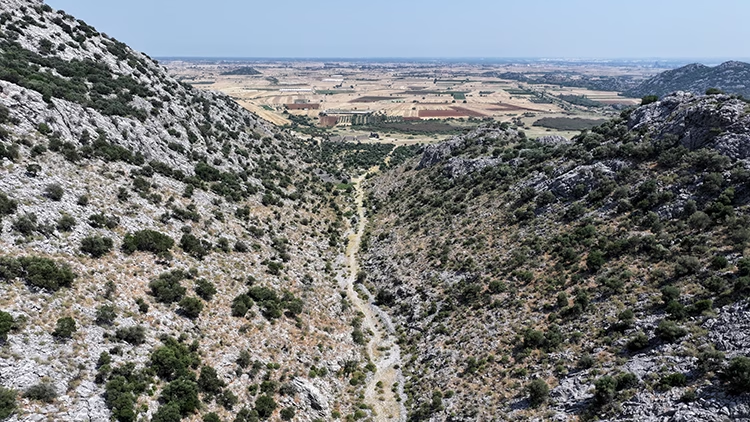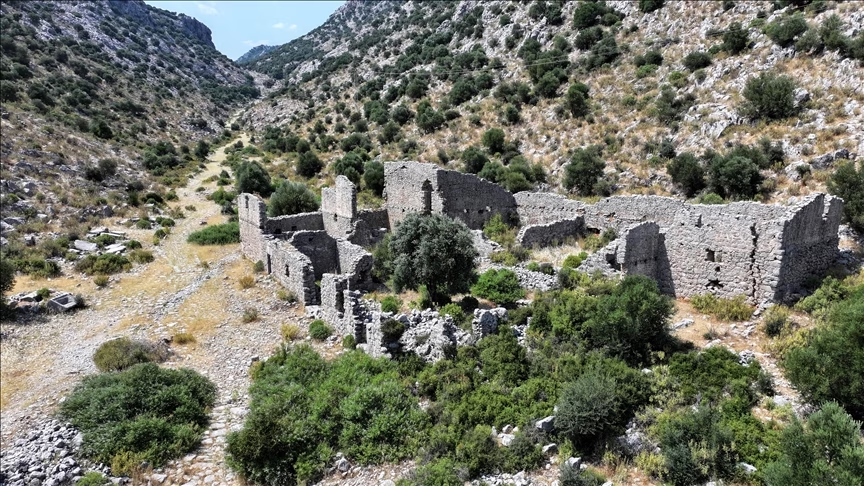Nestled in the Döşemealtı district of Antalya, a 2,000-year-old stone-paved road that once connected the ancient regions of Pisidia and Pamphylia now offers an exceptional discovery route for both history enthusiasts and nature lovers. Stretching through the breathtaking landscapes of the Taurus Mountains, this ancient pathway transports visitors on a journey through time, with every stone whispering tales from centuries past.
Located between the villages of Dağbeli and Kovanlık, the historic route bears traces of countless civilizations—from the Roman Empire to the Seljuks, from the Ottomans to nomadic Yörük tribes. Today, it stands as a rising star in the world of cultural tourism.
A Legendary 7-Kilometer Path Where History Meets Nature
Along this approximately 7-kilometer trail, visitors encounter sarcophagi, inscriptions, cisterns, and columns. Natural sinkholes and the region’s unique flora add a nature-themed layer to this historical walk. The presence of ancient lodging structures, believed to date back to the Roman period, reveals that the road served not only as a passage but also as a strategic stopover.

A New Favorite for Trekking Enthusiasts: The Döşeme Road
Thanks to recent promotional efforts, the ancient stone road has become a beloved trekking route for both local and international adventurers. Combining a rich historical atmosphere with natural beauty, the route is increasingly favored by cultural travelers seeking off-the-beaten-path experiences.
Pisidia and Pamphylia: Sister Civilizations of Ancient Anatolia
The ancient road once linked Pisidia, a mountainous region located on the northern slopes of the Taurus Mountains, known for its rugged terrain and resilient people. Historically resistant to external control—especially from the Persians and later the Romans—Pisidians eventually integrated into the Hellenistic world and later flourished under Roman rule through the development of urban colonies.

Pamphylia, on the other hand, stood out as a coastal region rich in fertile lands and cultural exchange, thriving on maritime trade. Encompassing much of modern-day Antalya’s coastline, Pamphylia was home to important ancient cities such as Perga, Side, and Aspendos. During the Roman era, administrative borders were redrawn, and parts of Pisidia were merged into Pamphylia, further strengthening the ties between the two regions.
The Name “Döşemealtı” Comes from This Road
Menderes Dal, Mayor of Döşemealtı, noted that the road was built in the 1st century BCE and was used by the Pisidian people to access the Mediterranean Sea. “This is more than just a stone-paved path; it’s a living witness to our culture and history. In fact, our district takes its name from the plateau this road traverses,” said Dal, highlighting the area’s rich historical and natural heritage.

A Path of Migration, Culture, and Memory
For centuries, the road also served as a migration route for the nomadic Yörüks, making it not just a transportation network but a corridor of cultural exchange and historical memory. Today, those who walk this ancient path are not only stepping into layers of Anatolian history, but also embarking on a journey through nature, heritage, and time itself.
Cover Image Credit: Süleyman Elcin/AA





